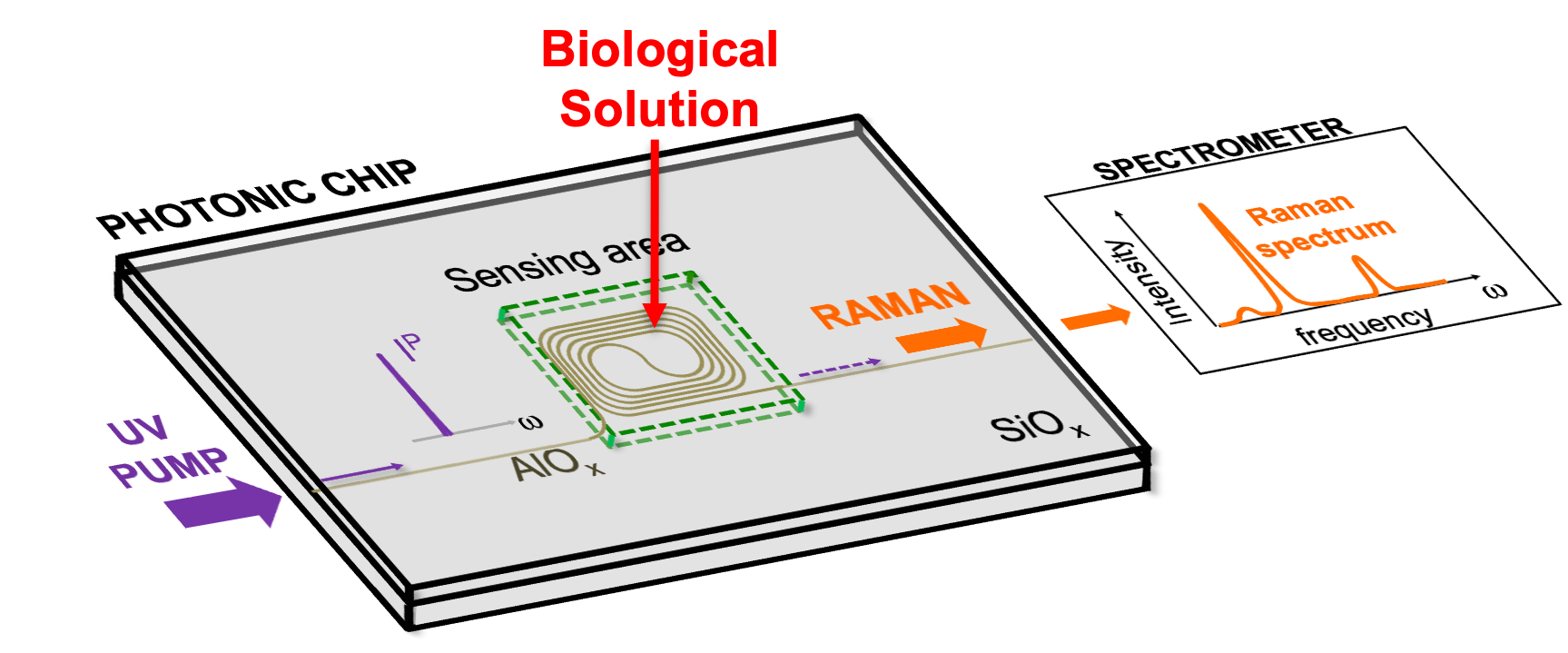Ultraviolet Photonic Integrated Circuits for High-Sensitivity On-Chip Raman Spectroscopy
PhD - Gent | More than two weeks ago
Raman spectroscopy is foreseen as a powerful non-invasive optical technique to probe with high specificities biological solutions resulting from body fluids or from biochemical industrial processes. This technique will enable a large number of sensing applications in the medical field, the pharmaceutical industry and the food industry. However, current Raman approaches suffer from insufficient detection limit or reproducibility. Integrated photonics can, in theory, overcome this problem by increasing the interaction length with the analytes, and the excitation and the collection efficiency of the Raman signal by using high index contrast waveguides [1]. For instance, Axithra, a recent spin-off from Ghent University and imec is making use of on-chip Raman sensing to monitor drug concentrations in blood. In practice, the presence of a background in the recorded optical spectra sets a fundamental detection limit that depends on the material used to form the core of the waveguide [2].
To substantially advance Raman sensing, the current detection limit must be improved by at least an order of magnitude. State-of-the-art performance is currently achieved using amorphous silicon nitride waveguides operating in the near-infrared (NIR) range. However, silicon nitride is not transparent at ultraviolet (UV) wavelengths, where resonant effects are expected to significantly enhance the Raman signal of biomolecules.
Alumina (AlOx) has emerged as a promising alternative material. Unlike silicon nitride, AlOx exhibits excellent transparency down to the UV range, enabling resonant enhancement of the molecular Raman signal relative to the background. Its favorable spectral properties help suppress background noise, offering a compelling pathway toward ultra-sensitive, on-chip Raman detection.
In this project, we will design, fabricate, and characterize integrated photonic circuits based on alumina, leveraging its broad spectral transparency from UV to NIR. We will investigate the intrinsic Raman response of these circuits across both spectral regions and implement on-chip Raman sensing of biomolecules. By comparing sensor performance across multiple wavelengths, we aim to exploit the advantages of a multispectral platform. Our goal is to achieve record-breaking detection limits and establish new paradigms for on-chip Raman spectroscopy.
[1] N. Le Thomas, Z. Liu, C. Lin, H. Zhao, and R. Baets, “Raman on-chip: current status and future tracks,” in Integrated Optics: Devices, Materials, and Technologies XXV, vol. 11689 S. M. García-Blanco and P. Cheben, eds., International Society for Optics and Photonics (SPIE, 2021), p. 1168908.
[2] N. Le Thomas, A. Dhakal, A. Raza, F. Peyskens, and R. Baets, “Impact of fundamental thermodynamic fluctuations on light propagating in photonic waveguides made of amorphous materials,” Optica 5(4), 328–336 (2018).

Required background: Applied physics
Type of work: 70% experimental, 30% processing
Supervisor: Nicolas Le Thomas
Co-supervisor: Pol Van Dorpe
Daily advisor: Nicolas Le Thomas, Pieter Neutens
The reference code for this position is 2026-116. Mention this reference code on your application form.
